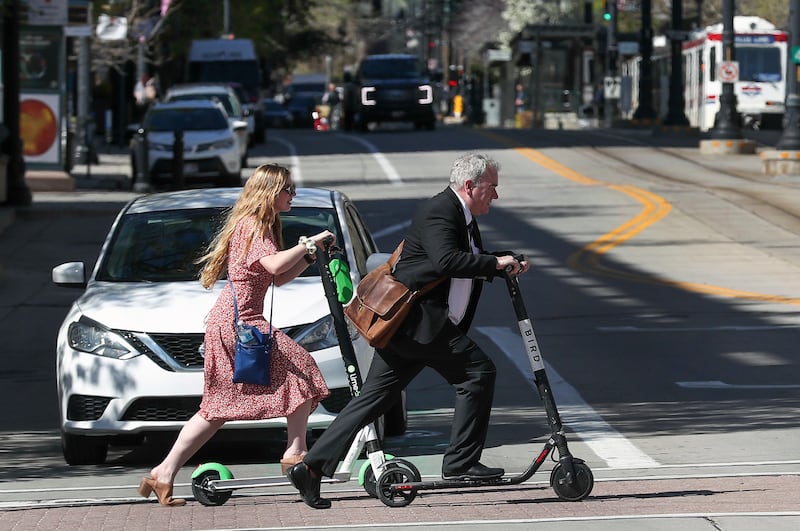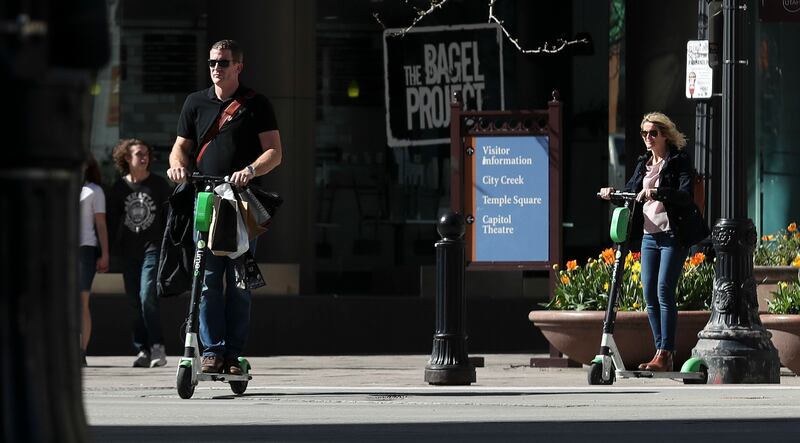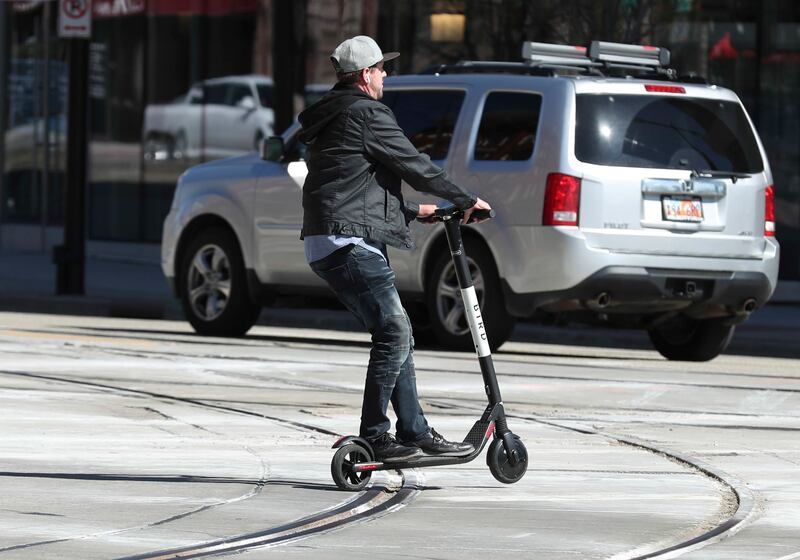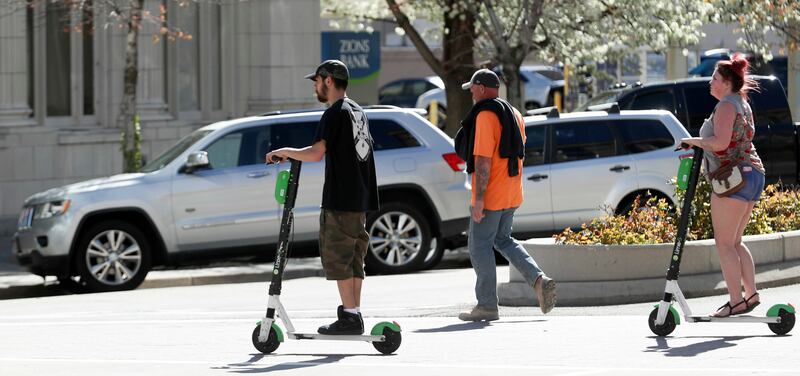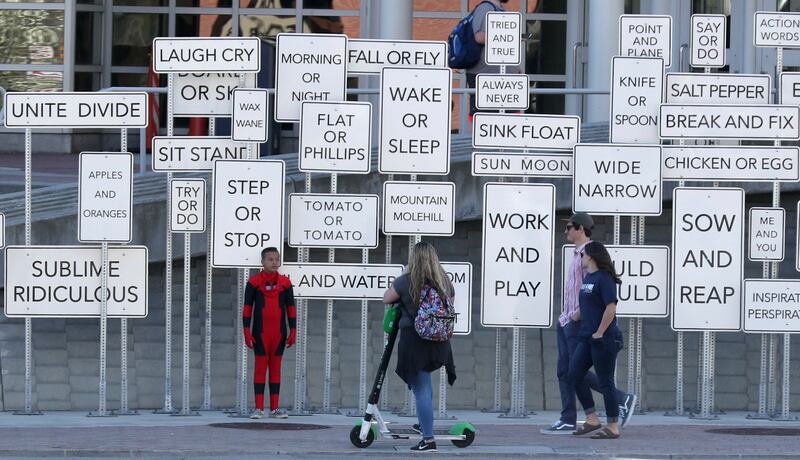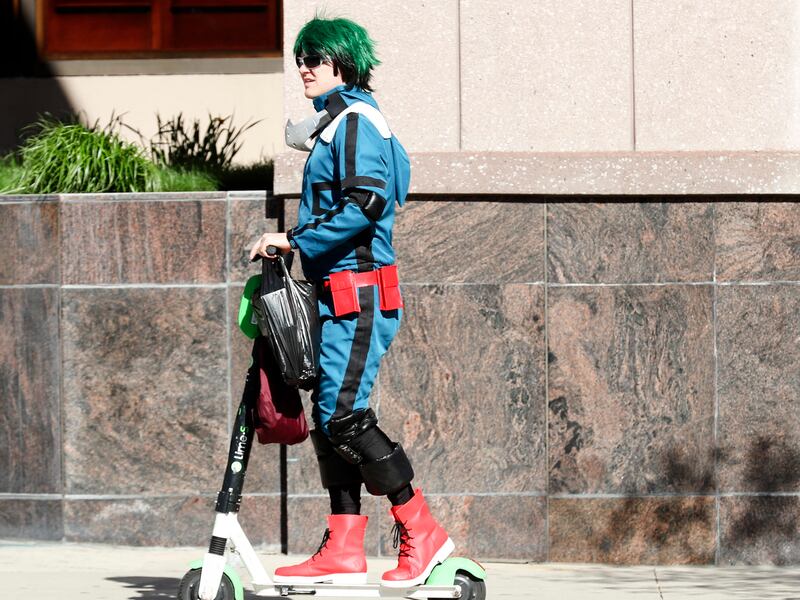SALT LAKE CITY — A zippy new transportation option is headed for the 15,000 public and private employees who toil each day at various University of Utah Research Park operations, an area long underserved by public transportation but just a short hop away from multiple transit nodes that serve the school's main campus areas.
Salt Lake City transportation officials, working alongside University of Utah planners and the two current vendors of rentable electric scooters in the city, Lime and Bird, are working toward a contract amendment that will allow the scooters to be deployed in the area.
A complimentary change to the operating agreements struck between Salt Lake City and the two vendors last summer will also create a new "dynamic cap" system that will allow the companies to exceed the current 500 vehicle per vendor limit when usage/demand is at a high level.
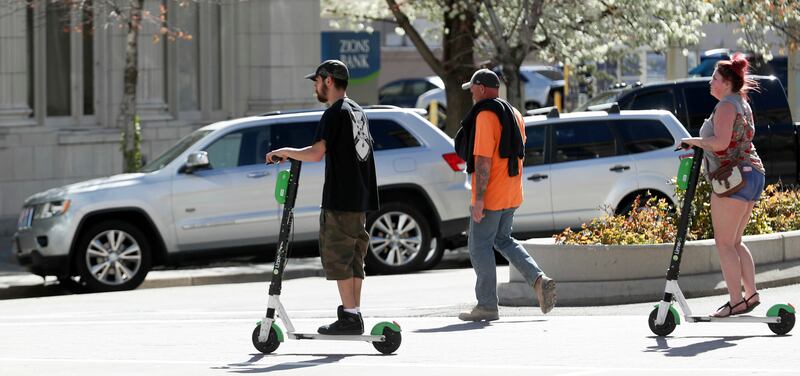
Ginger Cannon, the U.'s active transportation manager, said the current contract prohibits Lime and Bird from deploying scooters on school property, but does not ban the operation of the vehicles. Cannon said that while the school is an e-scooter no-deployment zone, students and employees are very familiar and comfortable with the systems and the vehicles are welcome to operate on U. property.
She also noted that opening up Research Park to the so-called networked transportation companies that coordinate scooter location and rental processes via digital platforms and smartphone apps, could make notable impacts on vehicle traffic and associated air quality issues in the area.
"We are working with Salt Lake City and all our transportation partners to manage transportation for Research Park, which has a lot more distance from light rail and bus connections," Cannon said. "These e-scooters are a fabulous way to make that connection."
Salt Lake City Transportation Director Jon Larsen said the new variable vehicle cap, or dynamic cap, will be a test of allowing the companies to temporarily expand their fleets by up to 20 percent or so when usage is approaching max levels. Larsen and his team are able to monitor the quantity and location of each of the vendor's scooters in operation throughout the city thanks to an online dashboard that syncs the city with Lime and Bird's live data streams.
Larsen said he expects the package of changes to operating agreements with Lime and Bird could be completed in a month or so. He also noted an effort to craft a set of new municipal ordinances aimed at creating a safe, and fiscally sustainable, regulatory environment for networked transportation companies in the city is still in process, but advancing.
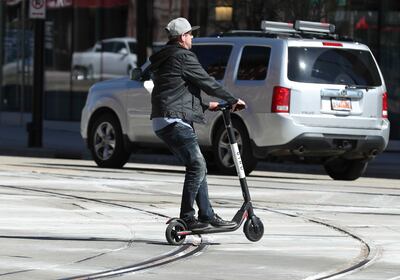
"We're making progress on the ordinance effort," Larsen said. "The goal is crafting a solution that achieves elegant simplicity. You can complicate things really quickly when it comes to how to manage these things. We're zeroing in on the best way to get the results we want without complicated formulas."
Larsen said one of the issues under assessment is establishing an equitable business license fee schedule for companies like Bird and Lime. The end goal is to generate enough new revenue to offset the city's administrative costs, and provide some additional infrastructure like designated scooter/bike parking zones, without creating a cost burden that ends up dissuading new networked transportation businesses.
Lime Director of Strategic Development Jonathan Hopkins told the Deseret News his company is working in partnership with the city and the U. to open the door for new transportation options in areas of the city, like Research Park and the U.'s campuses, that are currently off-limits to networked transportation companies.
"Transportation doesn’t just suddenly end at a jurisdictional boundary and we're working together to create some common standards," Hopkins said. "College students like these services and obviously there are great transit connections on the U. campus."
Hopkins highlighted national data accrued by Lime that reflects about 40 percent of e-scooter riders said their last ride was for dining and entertainment, 30 percent were commuting to work or school and 20 percent were making a transit connection. Hopkins said in just two years of operations, the company has coordinated some 45 million scooter rides and is continuing expansion.
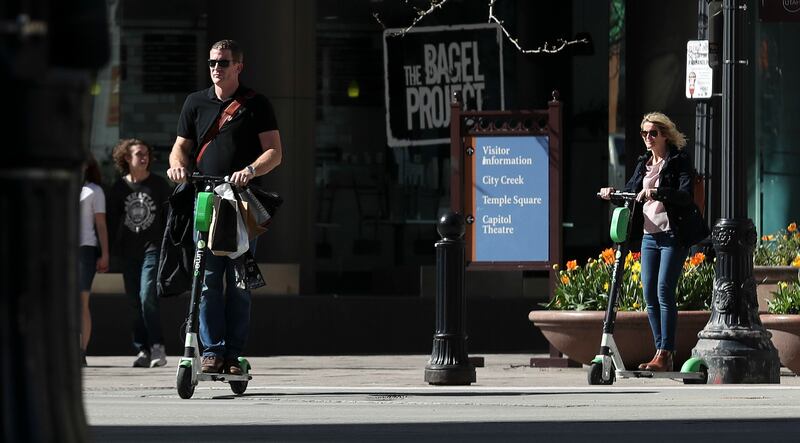
On Friday, the company launched operations in Ogden, deploying some 300 scooters in a three-month pilot effort. Hopkins said Lime is working with Mayor Mike Caldwell and Ogden business and city leaders to test how the electric two-wheelers can help address challenges that are common among U.S. cities.
"This is really our goal," Hopkins said. "Working together to help solve problems like congestion and poor air quality. That's where we're headed."
Results of a survey conducted by Salt Lake City released last fall showed residents who had ridden e-scooters gave the dockless vehicles mostly high marks and cited convenience, fun, availability and ease of use as the top things they like about the systems. They also provided valuable input, according to city transportation experts, about how the scooters are being used. While "fun" was the leading response, getting around quicker, running errands, getting to work and connecting with transit rounded out the top five reasons to ride.
The U.'s Cannon said she and school transportation experts are looking forward to tracking what impacts the e-scooters will have once they're available to Research Park commuters. She also noted that the school is continuing to expand its on-campus housing resources and envisions the need for efficient, and green transportation modes will continue to grow.
"There's no question we will be in need of more transportation options," Cannon said. "We'll be assessing how this works at Research Park … but we know now that there are 15,000 people that are getting in their cars every day to go to appointments, go to lunch or get to campus. We're hoping micro-mobility can have a positive impact."

